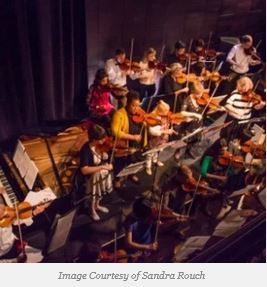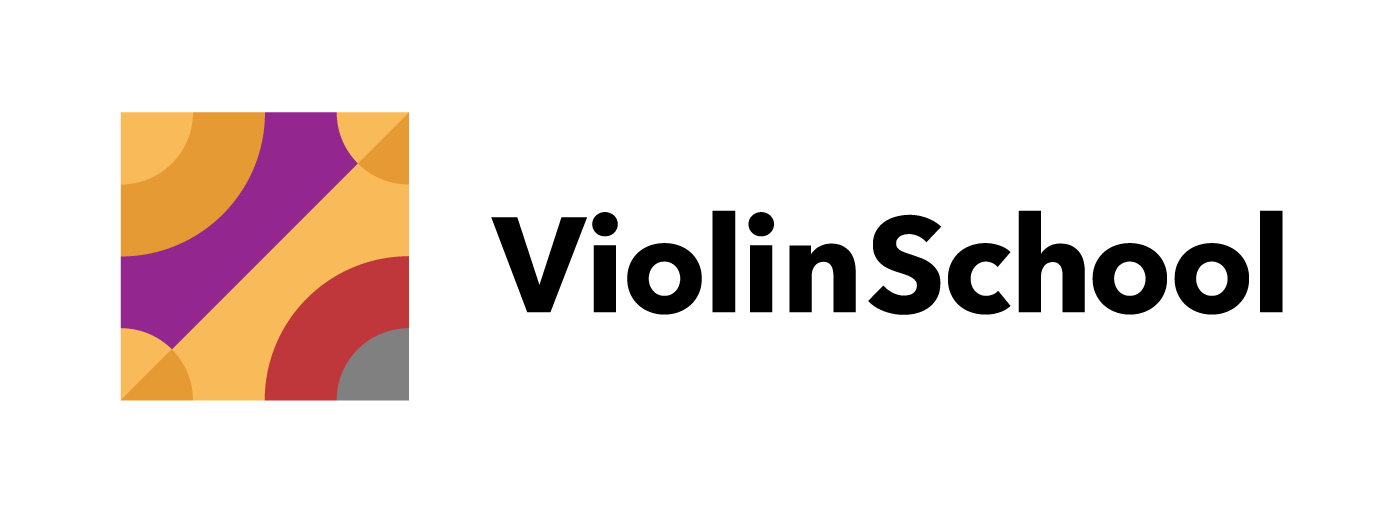Teaching with Technology: A Community Vision
Posted on 29th July 2015 at 14:30

The Music Workshop Company is focused around the community aspects of music making, shared experiences and direct musical engagement, but technology is opening up new opportunities within music learning. As the Internet becomes ingrained into every aspect of life, Simon Hewitt Jones, Director of ViolinSchool, is exploring the potential of online learning. We catch up with Simon to ask how he sees the future of violin teaching…
Image Courtesy of Tristan Jakob-Hoff
"We recently held the final concert for ViolinSchool’s Summer Orchestra Project, which was streamed live on the Internet. We had students joining us from the USA, Australia, Germany, South Korea, and probably other places I’m not aware of. One of our American students, who I’ve been coaching via video exchange, even made it there in person. She came straight from the airport to be at the concert.
I think it’s no coincidence that we had such a wide and international audience, because I believe something is changing in the world of learning. In fact, in the past few months, I’ve noticed a profound change in how people approach learning the violin. This came home to me when, earlier the same week, a majority of our London students chose to take their lessons via video in our new virtual classroom, rather than brave the tube strike that brought much of central London to a halt. Once the technology is set up, the student and the tutor are carried away by the work they are doing. The technology gets forgotten, and it’s all about the learning.
What most people care about is improving their violin playing and music skills, and having strong relationships with their tutors and fellow learners. But those relationships are not confined just to one medium or one type of tuition. I’m not suggesting lessons via the virtual classroom as a replacement for lessons in person, but, without a shadow of a doubt, I can say that we are seeing better and better results when learners take advantage of a broad mix of tuition options. Personal coaching, group lessons, online classes, the orchestra, and online courses all have their part to play in providing a rounded experience and giving each learner greater perspective about their learning.
As our use and understanding of digital technology grows, we’re increasingly providing guidance to students around the world, so far in North and South America, Europe, Asia and Australia. And our students there are asking exactly the same questions as we do here in London:
How can I become a better violinist?
How can I become a better performer?
How can I become a better musician?
For everyone there will be a different, personal answer to these questions, but we all share the same challenge: To improve how we learn, and to improve how we think, in order to improve how we make music.

There are two guiding forces that have driven ViolinSchool over the past few years: Community and creativity. Every day, I am inspired by the enthusiasm and imagination of the ViolinSchool community. It’s truly a group of creative thinkers who love to learn. The stronger that community is, and the stronger the individual connections within it, the more we will benefit from each other’s experiences, and the more we will learn. We don’t want geography to be an obstacle to that. We want to help violinists everywhere by building relationships with people all over the world. We believe that anyone, regardless of age, experience or geography, should be able to enjoy the wonder of making music with the violin.
I’ve identified three key things to help us get there.
1) The learner is empowered
Learning the violin should be a joyful, creative journey, which is why we reject dogmatic, ‘guru-style’ violin teaching. Our ideal is to teach every student to teach themselves.
2) Geography should be no obstacle
Yes, there are times when you just have to be there, but there are also times when you can achieve the same results online. It can be easier, cheaper and faster for someone in the Australian Outback, the Rural MidWest, or even Essex, to learn technical skills via an eLearning module, before coming to a lesson.
It’s also a really effective approach. You can get so much out of a lesson when the foundations of technique and theory are already there.
3) Technology makes our community better connected
What excites me about digital technology in education is not the technology itself: That novelty wears off after a few days or weeks. What excites me about technology in education is how it can bring a community together. When the community is broader and better connected then it’s easier to share our knowledge and understanding, and we all become enriched by the diversity of peoples’ experiences.

Since last January, ViolinSchool has been rolling out a program of learning resources. We’re committed to building on the great traditions of violin pedagogy that have developed over the last 300 years. We’ve grown up with the treatises of Galamian and Carl Flesch and the studies of Kreutzer, Sevcik, Dounis and others, and we’re now on a mission to update those traditions for today’s new generation of students. We’re working to revitalise violin pedagogy in a way that caters for every experience level in a fun, enjoyable way, from complete beginners to music college students and professionals.
We are steadily producing a wide array of studies, technical exercises and videos, as well as downloadable sheet music, in-depth guides and articles. We’re currently stepping up our production, so that by the end of next year ViolinSchool will provide one of the most comprehensive learning resources about violin playing that’s available anywhere.
But what excites me most about these new tools is the eLearning Modules that we’ve been developing, and which we’ll start releasing this summer as part of our new eLearning trial. These interactive study modules, which are informed by my research at the Royal Academy of Music, break down technical, musical and performance-related topics into a series of clear, easy-to-understand principles. We present the principles in the form of what we call ‘Learning Objectives’ – things our learners need to do in order to acquire specific skills.
ELearning has been used successfully for many years across a wide range of specialist areas, but it’s never been done properly before for the violin. The beauty of the eLearning Modules is that they provide students with a clear understanding of how the whole jigsaw of violin playing fits together. As students become more aware of how they do what they do, their playing becomes more consistent and their confidence increases. Because they have a clearer understanding of how they’re progressing, they get more out of lessons and coaching sessions.
Wherever our students are, whether in London or somewhere thousands of miles away, we look forward to welcoming them in our new digitally-connected community, and helping them to develop their playing to the fullness of their potential!
ViolinSchool’s eLearning trial runs through to September 2015 and beyond. If you are interested in asking about any aspect of the work at ViolinSchool, or would like to take part in the eLearning trial, you can contact the team by emailing support@violinschool.org
Share this post:





